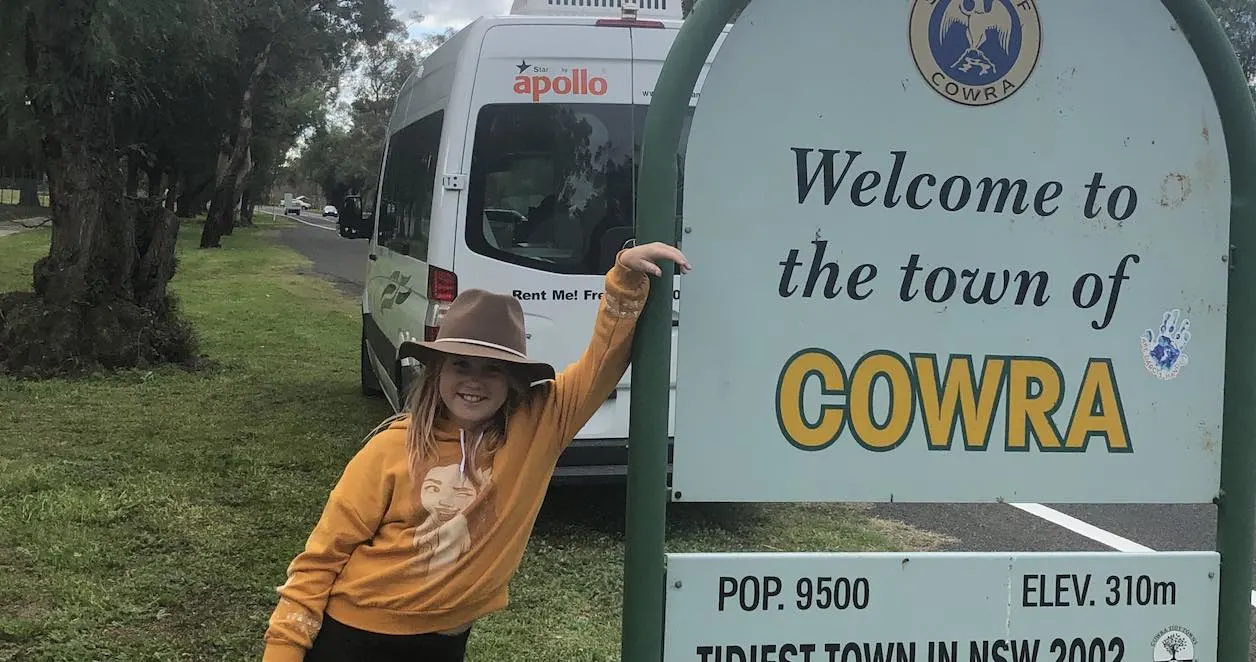Visiting Cowra in central NSW is a lesson in Australian Indigenous, settler and wartime history, and a chance to enjoy the beautiful NSW countryside and farmland. Cowra is set on the banks of the Lachlan River and has much for visitors and families – from its peaceful Japanese Gardens, its POW camp, famous for the tragic Cowra Breakout, its new adventure park, the Train Museum, sculpture park and gorgeous heritage buildings. You can also visit local farms here, and learn about Indigenous history from Wiradjuri people. We loved our time in Cowra.
The NSW town of Cowra’s history is as fascinating as it is tragic – from the displacement of Indigenous people to the incarceration of hundreds of international political prisoners and the site of the biggest breakout of Prisoners of War in history.
We acknowledge the traditional custodians of the land here, the Wiradjuri people, and pay our respect to their Elders, past present and future.
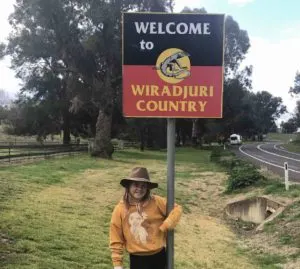
How long to stay:
We think two full days to explore the town and its surrounds, but it’s easy to linger here and enjoy the food, the country hospitality and the beautiful sunsets.
While you’re traveling:
Protect your data with a VPN so you can work remotely and use wifi without risking your security or information.
Getting there:
Cowra is a four hour drive from Sydney and just over two hours from Canberra. You can also take the train to Orange and then a 90 minute bus-ride to Cowra.
If you’re coming from Sydney you can combine your trip with a central west loop to Orange and visit beautiful towns along the way like Canowindra, Carcoar and Millthorpe, track north to Dubbo and over to Mudgee and back into Sydney through the Blue Mountains.
We travelled in an Apollo Campervan – we chose the Euro Tourer which had a double bed, kitchen, toilet and shower. It was super easy to drive and as its a diesel engine the petrol was cheap.
Where to stay:
We stayed in the lovely little Cowra Van Park by the Lachlan River, run by the friendly Stacy and Mitch. It has excellent amenities, is right next to town and lots of green space and trees.
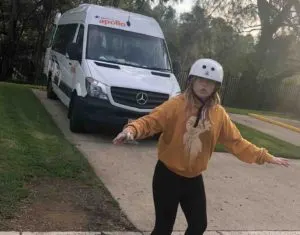
Cowra has many motels and hotels ranging from $80 to $150 per night – you can find a list here.
Where to eat:
There are lots of cafes in Cowra, our favourite was the Breakout Brasserie Café on Macquarie Street. We had coffee, breakfast and lunch here, it was so good! The rest of the time we bought supplies from Woolies and Coles here and cooked up at the caravan park.
Indigenous history:
We acknowledge the traditional custodians of the land here, the Wiradjuri people, who welcomed white settlers to their land and in return were displaced as settlers built on their village and sacred sites and forced them into labour on farms and in homesteads. Many indigienous people were murdered in this area, or were sent to the Erambie Mission on the banks of the Lachlan River. Many of the Erambie Mission residents have gone on to become the biggest fighters for Indigenous rights and freedom.
This article from the ABC provides some information about the first contact of white settlers with the Indigenous people here, and this transcript of the Parliamentary Library National Reconciliation Week Lecture 2015 by Dr Laurie Bamblett by is also good pre-reading. You can find a lot more information online.
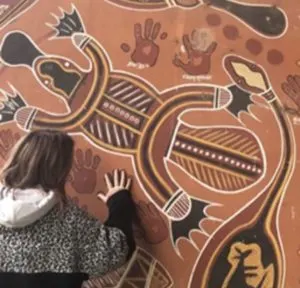
And so, here are the best things to do in Cowra, NSW:
Cowra Visitors Centre and Hologram
Your first stop in Cowra should be the Visitors Centre which you’ll find just near the Lachlan River Bridge on your drive into town. Made sure to stop off to grab lots of helpful local information and see the famous Cowra Hologram. It’s in a small theatre and tells the tragic story of the Cowra Breakout in 1944. If you don’t know much about this piece of Australian history it’s a very bizarre story, and I’ll share more below.
Indigenous murals under the Lachlan River Bridge
There is a series of beautiful Aboriginal murals under the Lachlan River Bridge in Cowra that depict the Wiadjuri people history on the area. Make sure to wander down and explore, andcross the tiny wooden bridge over the Lachlan river to see the murals on both sides. The artwork here is by local Aboriginal artist, Kym Freeman with contributions from local Indigenous children and the community, particularly the handprints. While I was thrilled to see the areas Indigenous history recognised, it’s a great pity to me that its quite out of sight under the bridge. However we did see this school project at the primary school in town in a much more prominent position.
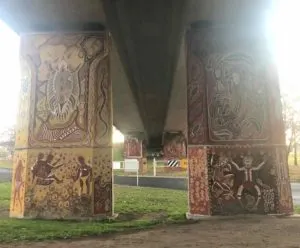
Beautiful murals under the Bridge
Indigenous tour with Dinawan’s Connection
It wasn’t easy to find Indigenous information in Cowra, in fact there was nothing at the Visitors Centre and the staff couldn’t help us. However, I did manage to track down local group Dinawan’s Connection and we met up with Will and his son Will Jnr who shared some history of the area with us, showed us some sacred Aboriginal places and some scar trees that had had Coolamon cut from them. These are oval shaped shallow dishes used for carrying food that has been gathered, water and babies
Dinawan’s Connection does dance performances and shares Indigenous history with local schools and community groups.
You can organise a walking tour or to see an Indigenous dance or performance. You can contact them via Instagram and Facebook. I recommend this as an acknowledgement of the traditional custodians of the land here and to ensure that you and your family are learning a full version of local history.
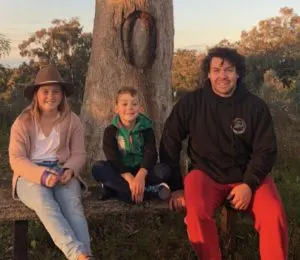
Scar tree with Will
Cowra Heritage Walk
Make sure to grab your map from the Cowra Visitors Centre or download here and take a one-hour heritage walk around Cowra’s Central Business District. The walk takes you to historic residential and commercial buildings including the district courthouse and school.
Lachlan River Walk
Wander along the banks of the river after looking at the Aboriginal murals on the pylons under the bridge. It’s a very pretty spot and there are picnic tables along the way for rest and quiet time along the riverside.
Farm tour
We were lucky enough to be hosted by new friends with a wonderful farm visit to see their farming operations like popcorn and beetroot production. Emmie loved it and we both learn a lot. Ochre Arch is a local eco-agriculture farm that offers educational tours of their farm to visitors.
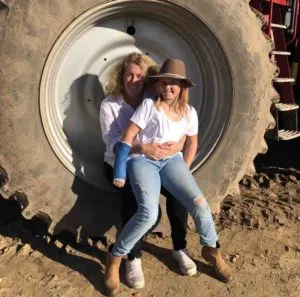
So much fun on the farm
Cowra Japanese Garden & Culture Centre
These beautiful Japanese Gardens were established as a gesture of reconciliation and acknowledgment of the 231 Japanese soldiers who died in the 1944 Cowra breakout. They really are stunning and incredibly peaceful. We wandered around, watched the delicate waterfalls and flowers, sat in the grass in the sun. It’s just a beautiful, peaceful place to explore and relax. There’s a café here where you can get a coffee and a bite to eat, and a small giftshop. It’s a definite must visit and the whole family will love it – Emmie and I stayed here for ages.
Entry is $15 for adults and $8 for children. The garden is open 9am – 4pm every day except Christmas Day.
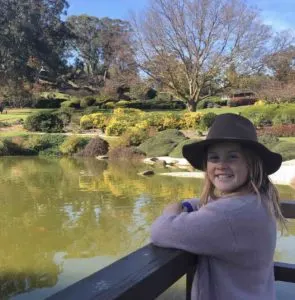
We loved the Japanese Garden
Sculpture Park
Just outside the gardens is a small sculpture park with works Australian and international artists. Definitely take a wander around this park during your visit to the Japanese Gardens. We found that some of the sculptures lack information, and so far have been unable to find further info but I will update as soon as I can.

Adventure Park & Lookout
Cowra Council has recently turned the area to the south of the Japanese gardens into an adventure park with swings, ziplines, huge silver slides and a mouse wheel. There’s lots for kids to play on and a huge area to run around in. Emmie loved this playground. At the top you will find some Indigenous paintings places here recently by local Indigenous people.
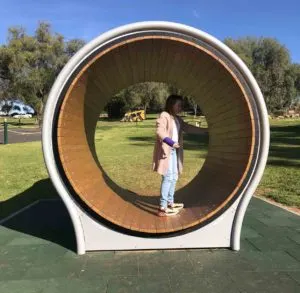
Emmie on the mouse wheel
The lookout up here is the perfect spot to catch golden hour and watch the magnificent sunsets that bless this part of the world each evening.
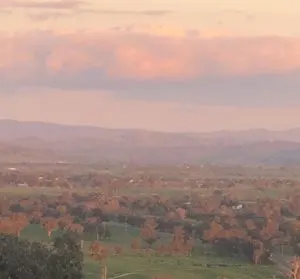
Beautiful Cowra sunset
The Cowra Breakout and POW Camp
Travel to the end of Sakura Road to the exhibition of the POW Camp on the original site. There’s a replica guard tower and an audio presentation that starts automatically when you approach it.
In 1941 the British Military Board constructed a Prisoner of War Camp here in Cowra to house mainly Italian soldiers captured in Egypt. It’s really so bizarre that over time this POW camp housed 2000 soldiers, political prisoners and their families from Indonesia (sent here by the Dutch) and between 1944 and 1945 Japanese Prisoners of War were also sent here. Many Italian prisoners worked on farms during the day and stories tell of how they befriended locals, influenced food culture and of a few romances too.
On the 5th of August 1945, the Japanese staged a mass breakout of 1104 soldiers from the camp, burning buildings, charging fences and attacking the Australian soldiers of the 22nd Garrisson – five of whom were killed. More than 300 escaped, 107 POWs were wounded, and 231 Japanese prisoners died along with 5 Australian soldiers. All the escapees were found within the next month.
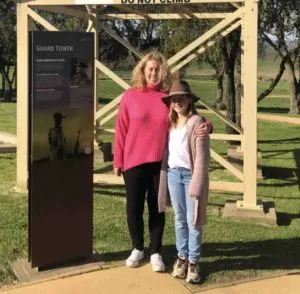
The Garrison Walk
Start this walk at the original gates to the Prisoner of War Camp on the corner of Binni Creek Road and Amaroo Ave. The path from here takes you through the grounds of the POW camp with single and information along the way about the camp and the Cowra Breakout.
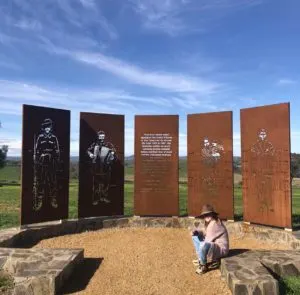
POW Cemetery
The Japanese War Cemetery on Doncaster Drive was established in 1964 and holds the graves of the 231 Japanese soldiers who were killed in the 1944 Cowra Breakout, and all Japanese Nationals who died on Australian soil during World War II. It’s on Doncaster Drive and is always open.
Australia’s World Peace Bell
You’ll find the Peace Bell in the Cowra Civic Square. It is made from melted coins donated by 106 United Nations member countries. There’s information about the bell and an audio presentation and you can even ring the bell.
A ceremony is held on World Peace Day – 3rd Tuesday in September – to mark the opening of the Disarmament at the United Nations.
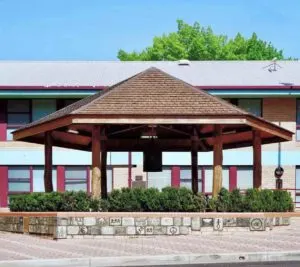
The Cowra Peace Bell
Cowra Railway Heritage Museum
Cowra train depot and roundhouse was opened in 1923 and while the train no longer runs to Cowra this museum houses vintage steam trains and pieces of locomotive history including operational steam and diesel locomotives, to our fleet of heritage passenger railway carriages, and our diesel ‘Tin Hare’ CPH railmotors. Entry is free. Train buffs and kids will love it.
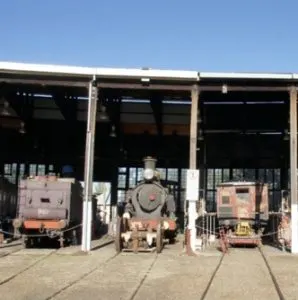
Choo Choo!
Wyangala Dam
If you’re heading here in warmer months then Wyangala Dam is the place to be. Enjoy fishing, water skiing, hiking and swimming from your base at the caravan park or free camping further inside the park. It’s a beautiful spot, and is very popular with locals during summer. It’s only 20 minutes drive from Cowra.
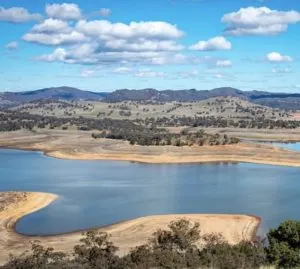
Wyangala dam at only 23%
Koorawatha Falls
You’ll find the Koorawatha Falls only a 25 minute drive from Cowra, and only 5 minutes off the freeway. There’s a swimming hole under the falls and a picnic area. Koorawatha also has an interesting history including the small township of Bang Bang and robberies by Ben Hall and other bushrangers.
Mount Nangar Lookout is a little further away but is a great spot for bushwalking, bird watching and enjoy views out over farmland and preserved bushland.
Enjoy this beautiful spot and have a great adventure.
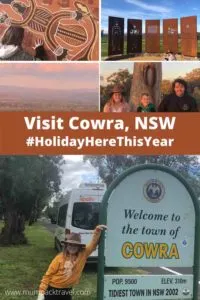
And if you’re feeling nervous about travelling check out our comprehensive family travel safety guide HOLIDAY SAFE: The complete guide to staying safe when traveling with kids It has everything you need to know about traveling safely on our family holiday or extended trip.

